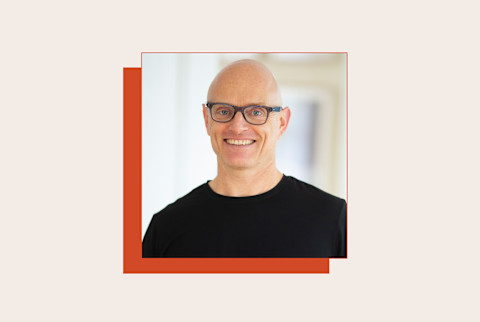This Specific Type Of Movement Is The Key To Longevity & Injury Prevention

We tend to treat injuries as a fact of life, especially in sports. Pull a hamstring, tear an ACL, tweak your back? That’s just part of the game.
But what if injuries aren’t inevitable? What if there’s a way to predict, and even prevent, most of them before they happen? That’s the premise of Ballistic: The New Science of Injury-Free Athletic Performance, the fascinating book by journalist Henry Abbott, founder of TrueHoop and former editorial leader at ESPN.
On the mindbodygreen podcast, Abbott dives into insights from his book, pulling together emerging science, data-rich storytelling, and lessons from elite athletes. At its heart is a simple but paradigm-shifting idea: the future of sports medicine lies not in treatment, but in prevention, by decoding the way we move.
The crisis of immobility
Abbott opens by highlighting a little-discussed but massive public health issue: immobility.
He explains that it’s the fourth leading cause of death worldwide, tied to everything from cardiovascular disease to cancer. And while many people assume we just "get lazy" as we age, Abbott argues that immobility often starts with injury. “When I’ve been inactive,” he says, “it’s not because I lost motivation. It’s because I was in pain.”
In other words, movement keeps us alive, but injury keeps us from moving.
What if we could see injuries coming?
To tackle this, Abbott introduces us to the Peak Performance Project (P3), a sports science lab founded by Marcus Elliott, M.D. P3 uses advanced motion capture, force plates, and millions of data points to analyze how athletes move. The goal? To spot the invisible patterns that precede injuries, like how echocardiograms can catch heart trouble long before a heart attack.
Abbott compares it to the history of cardiology: “For decades, we didn’t understand what caused heart attacks—until we could see inside the heart. P3 is bringing that kind of foresight to musculoskeletal health.”
The science of ballistics
The centerpiece of Abbott’s thesis is what he calls "ballistic" movement—the leaping, landing, and explosive patterns that define athleticism. Most injury-prevention programs overlook this, focusing instead on slow, controlled strength movements.
But according to P3’s data, mastering ballistics is key to avoiding injury, because these are the moments when the body is under the greatest stress.
One of P3’s most astonishing findings came from tracking 381 NBA players over multiple years. By reverse-engineering ACL injuries, they found a consistent predictor: players who tore their ACLs had a specific landing pattern—first touching down on the outside of their foot and then rolling inward, a movement they’ve dubbed “translation.” This seemingly minor misstep causes the shin bone (tibia) to whip across the knee joint like a windshield wiper, putting the ACL at high risk.
The underrated muscles below the knee
It turns out that preventing this “translation” starts with muscles most people ignore: the ones below the knee. The posterior tibialis, for instance, helps control how your foot strikes the ground. If these smaller muscles are weak, the force from landing can’t be properly absorbed and gets transferred up to more vulnerable joints like the knee.
Abbott emphasizes that traditional training focuses heavily on the quads and hamstrings, but we need to work the lower legs just as much. Strong calves, ankles, and feet are your shock absorbers—they are where injury prevention really starts.
How to train smarter (not just harder)
So, how can everyday athletes train like the pros? Abbott recommends:
- Jumping rope to build foot and glute coordination.
- Single-leg heel raises to strengthen the foot and ankle stabilizers.
- Plyometrics, like box jumps and depth drops, are introduced gradually with proper form.
- Neurological training, not just muscular. This includes repeating movements until a safe landing becomes second nature.
The idea is to create a kinetic chain that absorbs force effectively: from the ball of your foot, up through your Achilles, quads, and into your glutes.
Hip mobility: The hidden key to longevity
Another overlooked area? The hips. According to Abbott, hip function is the second biggest contributor to ACL injuries. Issues arise when the femur (thigh bone) rotates inward during movement—a twist he likens to “pulling the leg off a Thanksgiving turkey.”
P3 addresses this by assessing each athlete’s hip stability and mobility, then building targeted strength around the top of the femur. The result: more controlled, injury-resistant movement patterns.
Abbott even shares a quick home test. Try a side plank with one leg and arm lifted in an X shape. Hold for 30 seconds. If you can do that with control, your hips are likely stable. If not, it’s time to train them.
The takeaway
Abbott’s message is clear: this science isn’t just for pros. Anyone who wants to keep moving, whether you’re 25 or 75, can benefit from training smarter. Injury prevention, he argues, isn’t a niche pursuit. It’s a lifestyle upgrade that helps you move with joy, freedom, and confidence.
